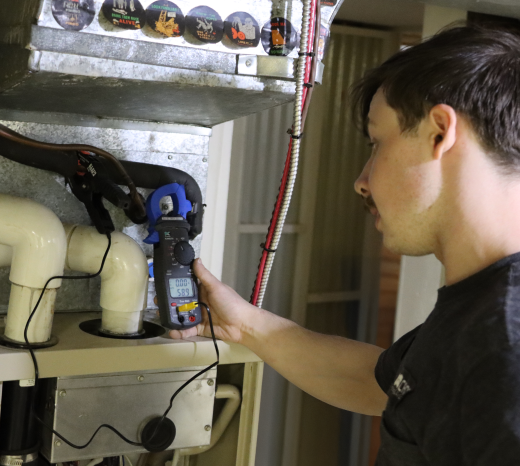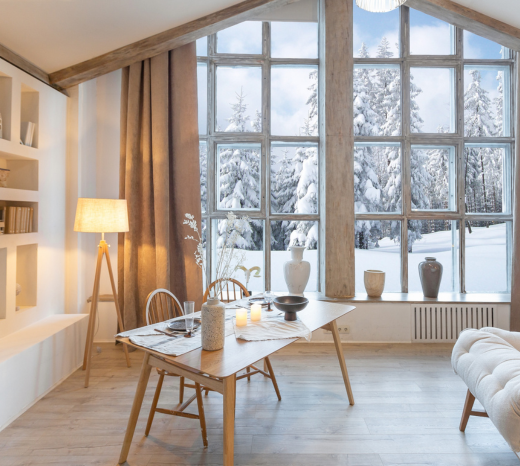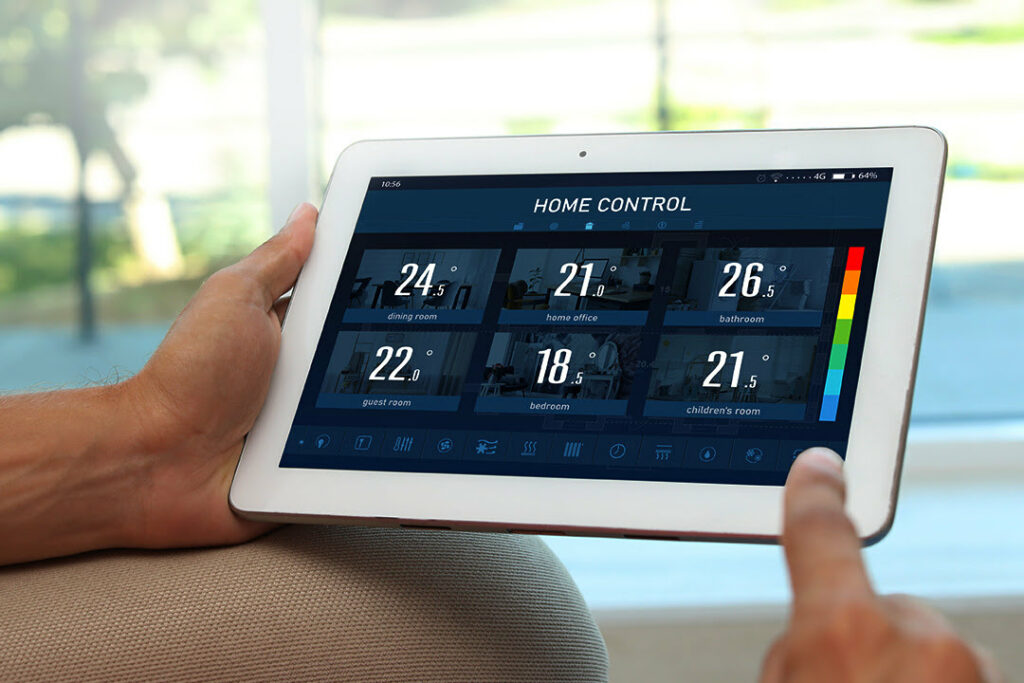Ontario winters aren’t exactly known for being gentle—and this year, with harsher than usual conditions predicted across the country, homeowners ...

Ontario winters aren’t exactly known for being gentle—and this year, with harsher than usual conditions predicted across the country, homeowners from Hanover to Listowel will be firing up their furnaces to stay safe and warm. But you may need to repair your furnace or even replace it before this year’s winter weather hits, and if it does, you’ll want to know about the costs and steps involved. We’re here to help.
Our experience performing new furnace installations for Ontario homes (as well as routine maintenance and repairs) gives us a wealth of information you can use to help buy a new furnace this year with total confidence in the process. Learn how modern forced air furnaces work and what to expect when buying a new one below.
See also: furnace maintenance & inspections
How Does a Forced-Air Furnace Work?
The basic principle behind forced air furnaces is pretty simple: air is heated up and blown through a series of ducts in your home, warming the interior and making you and your family more comfortable.
However, several complex and sensitive parts help modern forced air furnaces work safely and efficiently. Here’s a breakdown of how these components work:
- Your thermostat senses the ambient temperature in the house and triggers the furnace to turn on when it drops below a specified level.
- When the furnace is triggered, the heat source activates. This could be an oil or gas burner, or an electric heating element.
- Forced air furnaces that use oil or gas have a heat exchanger, which holds the exhaust produced by burning fuel and sends it outside the house through vents.
- Your furnace’s cold air return uses a blower to pull cool air from inside your home and deliver it to the heat exchanger, where it circulates until becoming warmer.
- Heated air moves through the air plenum and into the ducts of your home, entering the rooms through the supply ducts.
- You get to take off that heavy sweater and enjoy a warmer, more comfortable space.
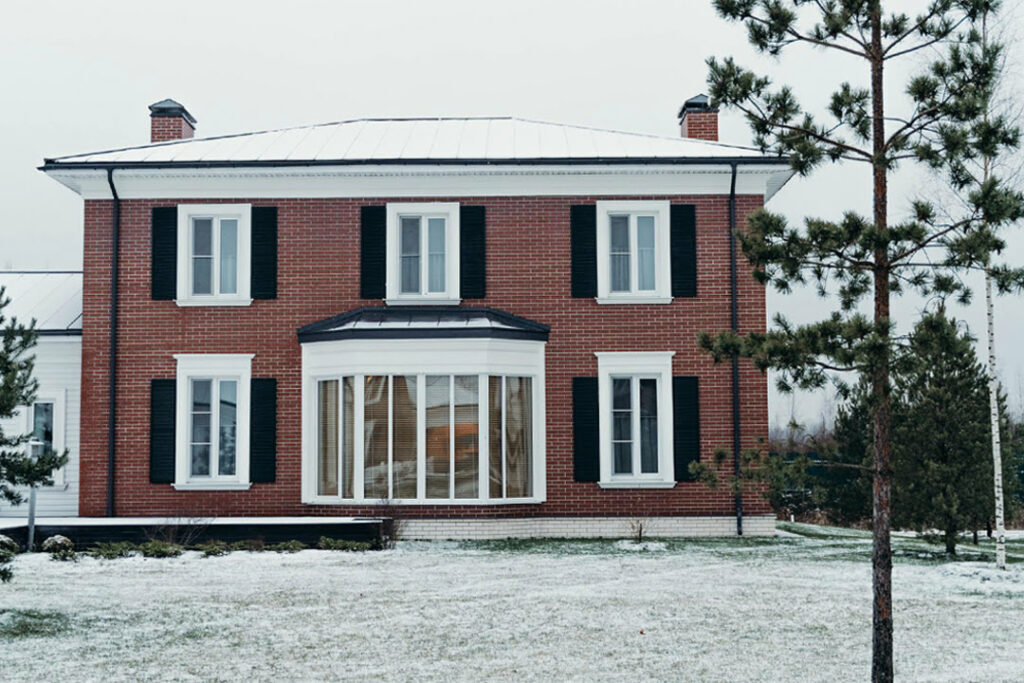
What Should Ontario Homeowners Consider When Investing in a New Furnace?
Deciding to have a new furnace installed in your home comes with a few other choices you’ll have to make. Here are some things to think about:
Fuel Type
Forced air furnaces typically use oil, natural gas, or electricity. Each type has its own pros and cons:
- Oil furnaces generate heat quickly, making them attractive in cold climates. However, they aren’t as efficient as natural gas furnaces, so they’re often more popular in remote locations without natural gas pipelines. If you live in rural Ontario, an oil furnace is worth considering.
- Natural gas furnaces also produce heat quickly, and are more efficient than oil furnaces. In more populated areas with access to natural gas pipelines, these systems are usually the most cost-effective to install and run because fuel is easily available and relatively inexpensive. For homeowners in most Ontario cities, these furnaces are practical choices.
- Electric forced air furnaces don’t need to vent exhaust, which can make them somewhat simpler to install. They may also be quieter than oil or gas furnaces. However, they typically cost more up front and may be more expensive to operate depending on electricity prices in your region.
Size of Home
Remember, your furnace needs to be powerful enough to heat your living space—so larger homes will need furnaces that produce more heat. Generally, a forced-air furnace should produce 30 to 60 Btus per square foot of space. However, this number tends to be on the higher end in cooler climates.
Form Factor
The square footage of your home matters, but so does the volume of the space you need to heat. Areas with higher ceilings or rooms with otherwise atypical shapes may require more power to heat them. For this reason, it’s always best to consult a licensed professional about your home’s heating needs before deciding on a new furnace.
Ducting System
Replacing your furnace may require changes to your home’s existing ductwork. This is often necessary if you want to add heating zones to your home.
Splitting your living area into different zones allows you to control the heat in different areas of your home. However, the more zones you partition your home into, the more your ductwork will likely need to be adjusted.
A dual zone system will use a heating damper to partition your ductwork into two networks, each controlled by a separate thermostat. Multi-zone systems use additional dampers to divide your ductwork into as many areas as needed—just bear in mind that the more you want to split up your ductwork, the more invasive your installation will be.
Efficiency Rating
All furnace systems have an AFUE (annual fuel utilization efficiency) rating. The higher this rating is, the more efficiently your furnace will use fuel during seasonal operation.
However, bear in mind that the AFUE only takes into account how efficient your furnace is at using its designated fuel source. For example, it will not account for the electricity needed to power controls, displays, fans, or pumps in an oil or natural gas furnace system.
Installation Location
The most important factors to consider when installing a new forced air furnace are air circulation, power availability, existing ductwork, and physical space for the unit. Essentially, you need to make sure that:
- Fresh air will be able to reach your heat exchanger and circulate effectively
- Your furnace can connect to natural gas lines, your oil tank, or electricity (depending on what kind of fuel it uses)
- Your furnace can be attached to the ductwork in your home, or that it’s located in a place where new ductwork can be installed along with it
- Your furnace will not be too close to other equipment or materials, which can make maintenance difficult and create a safety hazard
Because the factors that go into furnace placement can be complex, it’s always vital to have your new furnace installed by licensed professionals. Our team can help you find the ideal location for a new furnace in your home.

What Do Homeowners Need to Know about Buying Furnaces?
Understanding the different factors that affect a furnace’s effectiveness means you can start making key decisions about the type of system that will heat your home best. Here are some extra things to consider when it comes to furnace size and placement.
Choosing the Right Size Furnace
Size and volume aren’t the only factors you’ll need to weigh when sizing your new furnace. To get a system with the right heating capacity, you’ll also have to account for:
- Your home’s insulation
- The number of windows and doors
- How well your home is sealed
- The materials of your walls, floors, and ceilings
Calculating the exact heating needs of any home is a complicated process that’s best left to professionals. Our team will perform a detailed consultation to determine what your home needs.
Where to Install Your Forced Air Furnace
Finding a room in your home with enough room for the furnace as well as access to power, ductwork, and ventilation might seem difficult—but for most Ontario homes, basements and utility rooms are ideal locations.
In some homes, furnaces can also be placed in attics, laundry rooms, and garages. When we inspect your space, we’ll be able to tell you whether any of these rooms in your home are ideal for furnace placement.
What Kind of Furnace Maintenance Should Homeowners Expect?
All forced air furnaces require routine maintenance to keep them efficient and reliable. There are a few things you can do on your own, but you should also budget for professional service.
DIY Furnace Maintenance
Here are some things you can do by yourself to help keep your furnace running smoothly:
- Change your furnace filter once a month during the winter
- Check all air intakes and exhaust pipes on the outside of your home and remove any debris that could be blocking them (do this before turning on your furnace for the first time during the cooling season, and every couple of weeks during the winter)
- Look for any leaks in ducts or joints before starting up your furnace for the winter
Professional Furnace Maintenance
Once every year, schedule an appointment with us so we can make sure your furnace is safe and energy efficient. Our team will inspect and maintain areas of your furnace that can be difficult to access on your own. Our tasks could include:
- Checking the burner flame and vacuuming the burners (for oil or gas systems)
- Cleaning the blades of your blower
- Checking your drive belt and replacing it if necessary
- Lubricating bearings and other moving parts
- Sealing leaks in vents or ducts
Frequently Asked Questions about Furnaces
How Much Should a New Furnace & Installation Cost?
A new furnace and installation normally costs $3500-$5500 for most Canadian homes. Premium brands and homes with atypical heating needs may occasionally cost more, but beware of quotes that fall significantly under this range as these may use substandard components or be performed by parties without proper insurance, licenses, or certifications.
What Does a Furnace Sound Like During “Normal” Operation?
It’s normal to hear a low humming while your furnace is activated. This noise should not be loud or harsh enough to disrupt your daily activities. However, there are other noises your furnace can make that mean it needs to be professionally serviced. These include:
- Distractingly loud buzzing or humming, which can be the sign of electrical issues or a worn out blower fan
- Whistling, which can mean a dirty filter, loose bolts, or even a leak
- Banging or booming, which can happen when too much air pressure forces your air ducts to expand and contract during operation
If your furnace is making a noise it shouldn’t, make sure to call us immediately. We’ll be able to diagnose the problem and show you how best to deal with it.
How Much Does Running a New Furnace Cost?
Most furnaces cost $50-$150 per month to run during the cooling season, depending on temperatures throughout those months as well as the type of fuel the furnace uses and the amount of space it needs to heat. However, newer furnaces, which are designed to be much more efficient than old ones, can reduce these costs by up to 45% in some cases—making furnace replacement a serious money-saving option in the long run.
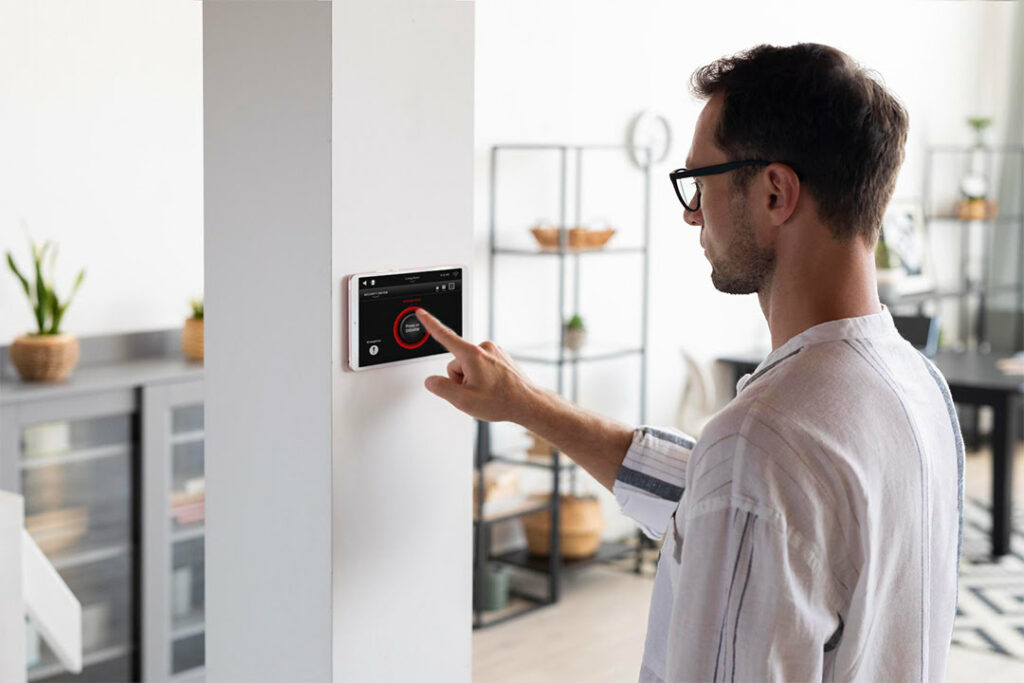
Should You Set Your Furnace to Run at Specific Times or Have it Maintain a Specific Temperature?
There’s not much point in heating an empty house, but can turning the furnace off whenever you leave the house cause premature wear and tear on components? Not really—and it actually takes more energy to keep your house heated consistently when you’re not there than it does to start the furnace up again each time you come home.
Even turning your thermostat down by 10 to 15 degrees for eight hours per day while you and your family are asleep or away from home can create annual cost savings of 5 to 15 percent. To avoid coming home to a cold house, consider investing in a programmable thermostat that can turn your furnace on an hour or two before you wake up or come home.
How Long Does a New Furnace Last?
Most furnaces last for about 15 to 20 years, but that’s assuming you take good care of your system and schedule regular professional maintenance for it. For best results, follow the DIY maintenance tips above and call us to give your furnace a check-up and tune-up at least once a year (usually in autumn, before the cooling season gets fully underway).
How Long Does Installing a Furnace Take?
Most furnaces can be installed in anywhere from 4-10 hours, depending on the size of the home they need to heat and the complexity of the ductwork involved. Larger homes that are being split up into multiple heating zones may take longer—but when you reach out to us for a quote on furnace installation, we’ll be able to give you a timeline for the installation based on the specific factors at play in your home.
When Does Your Furnace Need Repairs?
Even properly-installed furnaces need professional maintenance from time to time. You should call us for help with your furnace if you notice any of the following signs of trouble:
- Your furnace is making strange noises (listed above)
- Your furnace is blowing cold air (or no air at all)
- Your heating bills are becoming progressively higher
- Your furnace keeps cycling on and off rapidly
- You notice cold (or even icy) spots in your home
Our team of experienced professionals will be able to find the source of these problems and offer solutions. And when it’s time to replace your furnace, we’ll walk you through the steps and costs involved so you can enjoy warmth and comfort again as easily as possible. Contact us now and speak with a team member to learn more about how our services can help.

